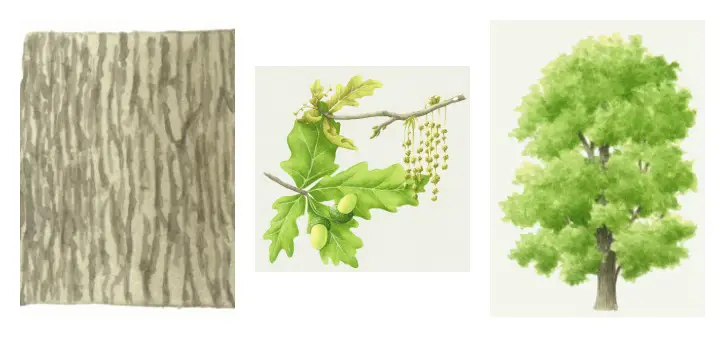Oak
Oak

The oak tree once formed a third of all tree cover in Britain. An important tree, the oak was once held sacred by the Druids, and has always had many practical uses. There are two main species of oak – the English or pendunculate oak, known in Latin as Quercus robur, and the sessile oak, called Quercus petraea.
Facts and stats
- Lifespan: 800 years
- Height: This broad spreading tree can reach up to 30 metres in Scotland.
- Leaves: Easy to identify due to the rounded knobs - or lobes - that extend round the whole leaf.
- Seeds: Most oaks do not produce acorns until they are over 50 years old. The oak’s acorns are carried on long stalks or ‘peduncles’.
- Flowers: The female flowers are on stalks - a feature characteristic of the English oak that distinguishes it from the closely related sessile oak.
- Bark: An oak tree’s bark becomes fissured with age.
- Insect species it supports: 500
- Native to: Europe and Asia Minor
- Uses: From the early days, its strong and durable timber was found to be ideal for shipbuilding and for making timber frames of buildings. The tannin in its bark was also used for tanning leather. Even the sawdust was, and still is, used for smoking food. Today, oak timber is used to make furniture and barrels. The tree is also planted for its conservation value.
Famous oak trees in Scotland
Birnam oak
This ancient tree stands on the western bank of the River Tay. The wood to which it once belonged was immortalised in the words of Shakespeare in the play Macbeth. Its long horizontal limbs reach out from its sizable 5½ metre girth.
Neil Gow’s oak
The much-loved Scottish fiddler Neil Gow (1727-1807) is said to have composed many of his melodies whilst reclining against this old sessile oak. You can find this one on the banks of the River Tay too, just 20 minutes walk from the Birnam oak.